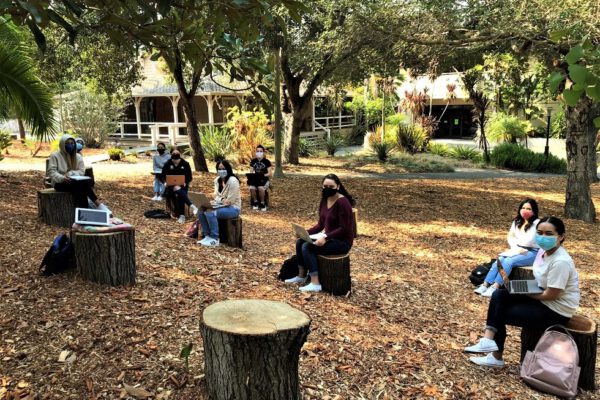By Tim McDonough
News of natural disasters—hurricanes, floods, wildfires—often make us think of personal connections to the impacted area, such as friends, family members or past visits. Those of us working for national higher education associations will also think of member institutions—colleagues and friends—who may be in harm’s way.
Hurricane Katrina hit the Gulf Coast with a vengeance in August 2005,the very beginning of the academic year for colleges and universities. News reports shared immediate details of widespread destruction, and within hours it was clear that institutions in Alabama, Mississippi, and especially Louisiana, had been dealt a devastating blow.
While students had been evacuated, in those early hours it was difficult to ascertain damage and casualties. Some presidents in the New Orleans area were publicly unaccounted for more than 24 hours after the hurricane’s landfall. Final estimates had more than 30 institutions severely damaged and more than 100,000 students displaced.
Not only was damage to institutions like Tulane University, Dillard University, Loyola University, Xavier University and the University of New Orleans extensive, but we began to hear from colleges and universities throughout the Gulf Coast and southeast that students from impacted institutions were showing up unannounced and attempting to register for the fall semester. Clearly something had to be done.
Under the leadership of ACE President David Ward, the ACE government relations, legal and communications teams worked hand-in-hand with colleague organizations in the Washington Higher Education Secretariat to identify critical needs and the availability of resources to meet them. Spontaneous efforts to help were brought together under the umbrella web site, CampusRelief.Org—work spearheaded by both ACE and the National Association of College and University Business Officers (NACUBO).
As part of the effort, the needs of individual Gulf Coast institutions were matched with the surplus help of colleges and universities nationwide, including things as basic as furniture, computers and laboratory equipment. Matriculation agreements were arranged with institutions willing to host impacted students for the fall semester. These agreements were gratis, allowing damaged institutions to keep the tuition revenues they might otherwise have lost due to transfer. This was vital to the financial viability of those institutions hit hardest by the storm. Tens of thousands of students were eventually accommodated under these agreements.
All of this support was arranged and rolled out within a week of Katrina hitting the Gulf Coast: CampusRelief.Org was launched on the Monday after the hurricane’s landfall. The near-heroic contributions of both individuals and associations to this effort were so numerous they are difficult to credit without missing something or someone. More than 20 organizations contributed in some way to this tremendous effort that likely saved several Gulf Coast colleges and universities.
In a later magazine column, Tulane University President Scott Cowen said, “every disaster carries with it remarkable stories of heroism and courage that rekindle the spirit and provide hope for renewal. Many of these stories will never be publicly told, but the incredible response of the higher education community to its fellow institutions in need is one story that should be. Those of us at the universities and colleges Katrina affected will be forever indebted to our colleagues around the country for their generous response in the days following the storm.”
As we reflect on the 10th anniversary of Hurricane Katrina, we will no doubt read and hear stories of rescue and rebuilding and the people who made a difference. When we do, we must also recall the way the higher education community pulled together to save and restore a critical element of the Gulf Coast’s infrastructure—its wide array of colleges and universities. While there have been organized campaigns in American higher education before and since Katrina, none of them will likely match CampusRelief.Org. The website is now long gone, but its positive impact continues a decade later.
If you have any questions or comments about this blog post, please contact us.


